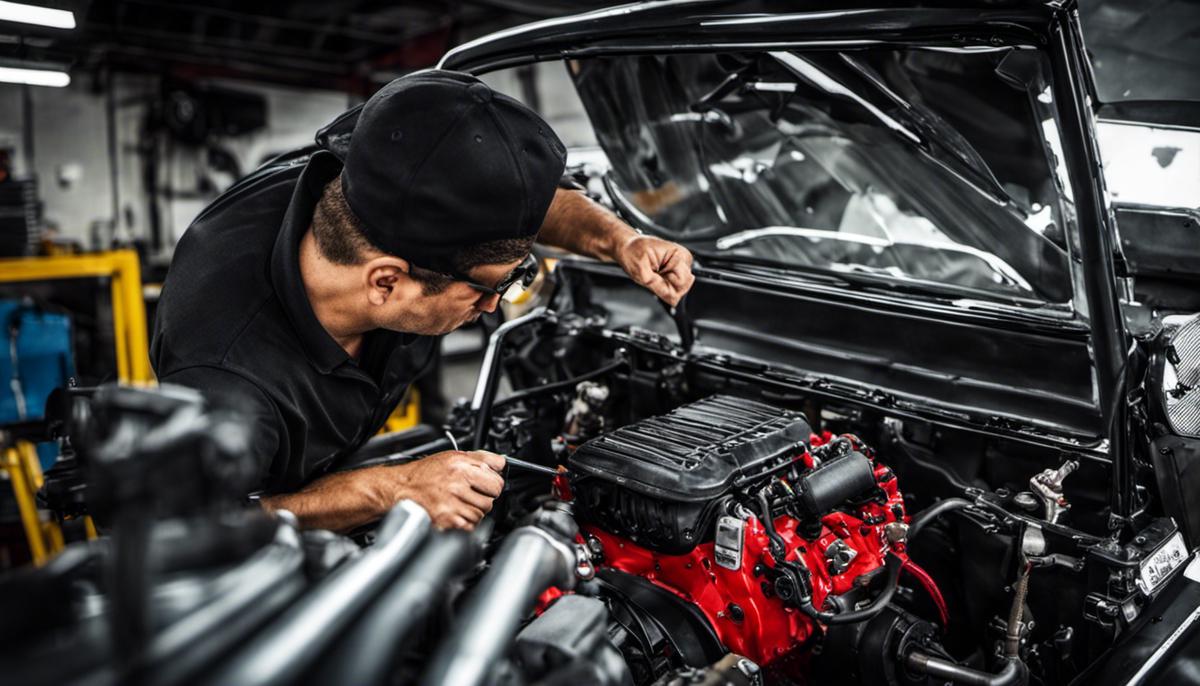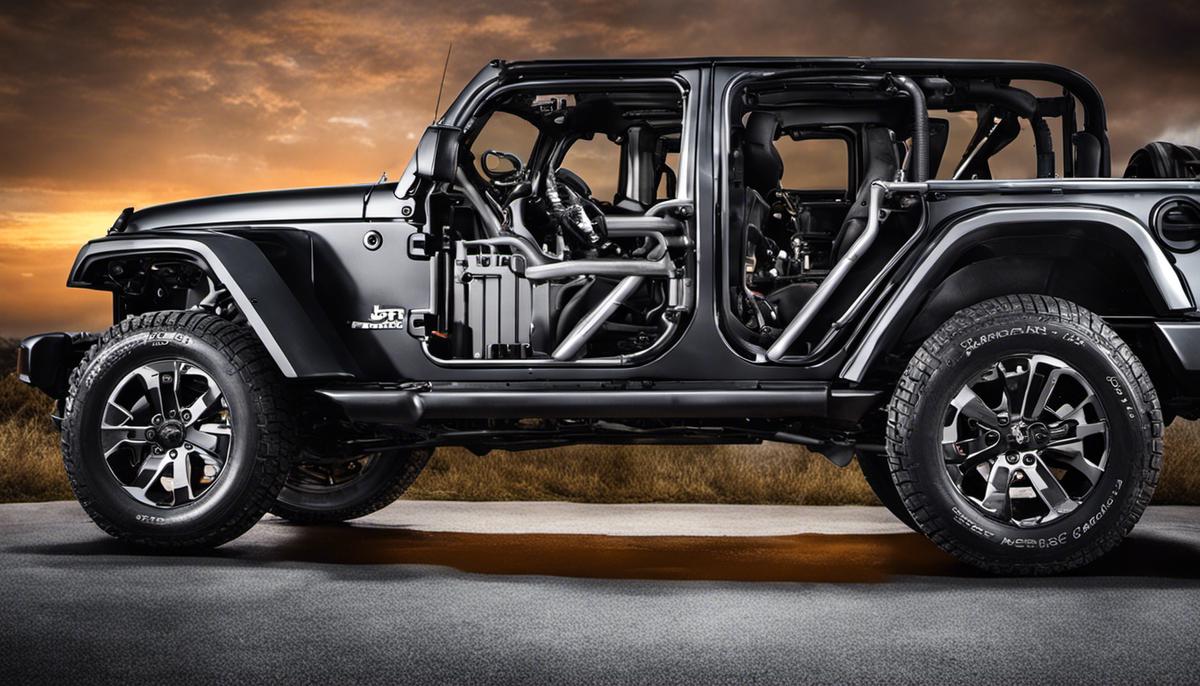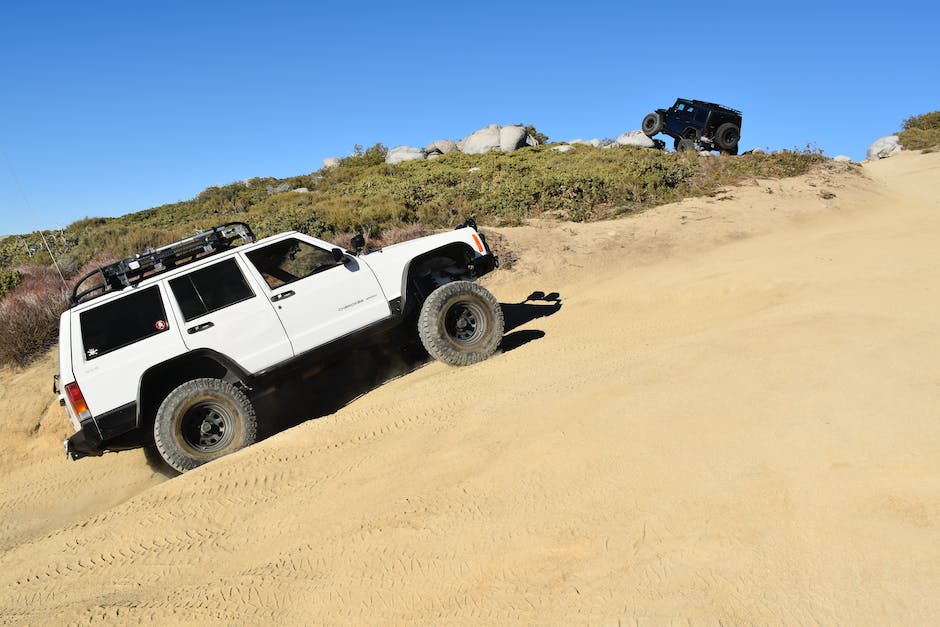Mastering DIY Checks for a Used Jeep Wrangler

Last Updated on October 19, 2023 by Christ
When it comes to advancing your automotive acumen, understanding the ins and outs of purchasing a used vehicle such as the famed Jeep Wrangler can save you from diving into a money pit. From assessing the nuts and bolts under the hood to the gloss and gleam of the exterior, each detail holds vital information on the vehicle’s past, current condition, and potential future problems. This guide aims to steer you through the process of inspecting the engine and transmission, evaluating the body and frame, and undertaking a comprehensive test drive to gauge handling and suspension. Step into the driver’s seat with confidence, armed with the knowledge to make an informed decision.
Contents
Checking the condition of the engine and transmission
Spotting Engine and Transmission Wear in Used Jeep Wranglers
Few hobbies match the adventure, exhilaration, and fellowship that comes from joining the Jeep Wrangler community. A solid balance of rugged outdoor charm and technical prowess, Jeep Wrangling indeed leads to some quality time both on and off the road. When the time comes to consider a pre-loved Wrangler, we must all be a bit of sleuth. So, here’s a handy guide to determine engine and transmission wear, helping with an informed purchase.
First off, start with the engine. The heart of the Wrangler, its condition greatly determines the vehicle’s overall health.
- Unusual Engine Noises: A healthy engine runs smoothly, with no knocking or clunking sounds. Beware of strange noises as they might indicate severe problems like broken parts or failing valves and lifters.
- Exhaust Smoke Color: The color of the smoke says a lot about engine health. Blue smoke points to oil burning, white indicates coolant problem, while black smoke suggests overly rich fuel mixture. All require immediate attention.
- Oil Condition: Thick, dark oil or presence of metal particles can mean engine wear. Again, milky brown oil reveals a coolant leak, which can cause severe engine damage.
Now, let’s shift the focus to the transmission.
- Shifting Issues: Whether manual or automatic, a smooth shift is crucial. Watch out for hard shifts, delay in engagement, or the jeep slipping out of gear. These are signs of potential transmission issues.
- Unusual Transmission Sounds: While on a test drive, lookout for whining, humming, or clunking sounds. Noise while in neutral might also signal transmission wear.
- Transmission Fluid Condition: Healthy fluid is usually clear red. Dark, cloudy fluid not only shows wear but also alerts to possible heating issues.
Last but not least, common to both the engine and transmission is the check engine light. Many tend to overlook this warning, leading to further damage and expense.
Overall, don’t rush the purchase. Time taken initially can save countless hours of troubleshooting and repair later on. Always trust your senses and when in doubt, get a qualified mechanic’s opinion before buying.
Remember, enjoying your Jeep Wrangler also means taking good care of it. Happy Jeeping!

Assessing the Body and Frame condition
Checking the Body and Frame: A Crucial Step in Buying a Used Jeep Wrangler
Being a fervent aficionado of Jeep Wranglers, one can surely be absorbed by their rugged charisma and robust build. And there’s nothing quite like the thrill of securing a reasonably priced, used Wrangler that screams adventure! That said, it’s crucial to note that an under-the-hood inspection, though essential, is not the only inspection needed before making your purchase. Examining the body and frame of a used Jeep Wrangler is just as critical as the mechanical aspects discussed in our previous article. So, let’s delve into why this is vital.
The Jeep Wrangler, designed for off-road escapades, is often subjected to harsh conditions that can compromise its body and frame integrity. Hence, checking these areas when buying a used Wrangler is quintessential in ensuring your vehicle has longevity, safety, and value.
-
Frame Inspection:
Wranglers, like any other vehicle, are prone to rust. It’s critical to carefully inspect the frame for rust, particularly in models with steel frames. The key areas to scrutinize are the frame rails, cross members, suspension mounting points, and core support. Rust can weaken these key areas, ultimately compromising the vehicle’s structural integrity.
-
Body Assessment:
A used Wrangler may have had an adventurous past, and the bodywork can say it all. Be keen on looking for signs of abuse or severe scratches that may lead to rust. Also, examine the body for signs of repainting or body fill, which could indicate past accidents.
-
Undercarriage Check:
Thanks to the Wrangler’s high ground clearance, a look at the undercarriage is typically easy, and this is a prime area to look for indications of rust, dents, or leaks. Inspect the exhaust system, driveline components, and the underside of the engine and transmission thoroughly, for they provide crucial clues about the Jeep’s past use and the potential troubles that might occur in the future.
Remember, ignoring these key areas during the inspection process can result in unanticipated expenses down the road. In some cases, extensive rust or structural damage can make a used Wrangler unsafe to drive or even unsalvageable. Therefore, don’t underestimate the importance of a body and frame check.
This article isn’t here to scare you away from your dreams of Jeep ownership. Instead, it should serve as encouragement to delve deeper into your inspection, and to be as meticulous as possible. By doing so, you’ll find a used Jeep Wrangler that not only promises gripping escapades but also offers peace of mind. Happy Jeep hunting!

Test-driving for handling and suspension issues
In the world of Jeep Wrangler enthusiasts, the journey continues beyond the initial inspections of engine sounds, oil and transmission fluid conditions, and check engine light. There’s so much more to look out for when test-driving a used Jeep Wrangler. Let’s delve into the additional considerations that will elevate your purchase from good to great!
First things first, devote attention to the electrical systems. This includes testing the headlights, tail lights, turn signals, and brake lights to ensure all are functioning correctly. The windshield wipers should move smoothly without producing any squeaking noises. The air conditioning and heating system should also be in optimal condition, with the vents spreading the air evenly across all areas of the jeep.
Next, remember that steering and suspension are critical elements in your Wrangler. These are best tested by taking the Wrangler out for a test drive. How does the jeep respond to turns? A used Jeep Wrangler in good condition should turn smoothly with no odd noises. It should also continue in a straight line when you let go of the wheel momentarily—a veering to the side could indicate wheel alignment issues.
During the test drive, pay close attention to how the Jeep responds to braking. An ideal Wrangler should come to a stop smoothly without any squeaking or grinding sounds. If it shakes when you brake, this could be a sign of problems with the braking system.
In the interior, scrutinize the seats for any wear and tear. Manual or electrical seat adjustments should function accurately. Also, evaluate the condition of the seat belts and their locking mechanisms. A tip for the sound aficionados: check whether the sound system works effectively across all its functionalities – am, FM, AUX, etc.
The Jeep Wrangler is famed as an off-road vehicle, so any signs of off-road abuse should be a red flag. A thorough assessment may also reveal if the vehicle has been lifted or altered, which can sometimes compromise structural integrity or cause topology changes impacting handling and safety.
Finally, pay due attention to the condition of the tires. They should be evenly worn, which indicates that the previous owner(s) maintained regular tire rotations. Disparity in wear can denote problems with alignment or suspension.
Jeep Wranglers are fantastic vehicles designed for ferrying adventurers over complex terrains. However, even they can be mistreated or left deteriorating. Embarking on your quest armed with a checklist of considerations as detailed as this will ensure you secure a trusty companion that will not just fulfill your fantasies of off-road domination, but serve you reliably in your day-to-day life. Remember, as enthusiasts, our love for the Wrangler encompasses not just the thrill, but the knowledge and meticulous care that keep the thrill alive!

Now that you have ventured through the pivotal aspects of inspecting a used Jeep Wrangler, remember to not let the excitement of obtaining an iconic four-wheel-drive vehicle cloud your judgement. Be meticulous with your inspection, and trust your instincts – if something feels off or too good to be true, it portably is. It’s much easier to walk away from a bad deal than to find yourself dealing with avoidable mechanical quandaries. Bear in mind that a thorough inspection, coupled with a measured test drive evaluation, could make the difference between owning a dependable off-road ally or a burdensome repair hound. Your newfound knowledge will surely illuminate your path to picking the perfect used Wrangler.
Leave a Reply